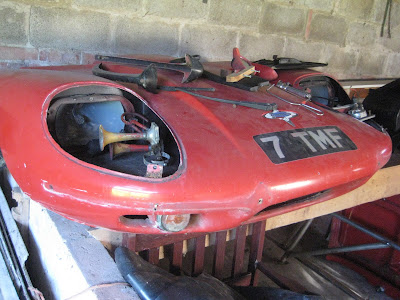Dad came up to help out with this and after a minor hold up with the phone engineers We set to with stripping out a few components that were running through the bodywork to the engine bay.
starting with the steering wheel, this needed to have one clamp removed from it on the other side of the bulkhead, (Engine side) the 5th picture down below shows some of the removal process.
We also took out the gauges and drew up a diagram for the resulting cable removal.
during the process we found that most of the switches have been damagedas the back sections that house the pins for cable connectors have come apart. These cannot be repaired and will need replacing when I hit an autojumble next. Mine in particular are Jaguar. Also removed were the various dials on the dashboard.
 |
| Loosening the drivers dash section in order to get the dials out. Another photo the site won't let me change! |
The centre 'Boss' screw has already been removed from the steering wheel end, at this point detailed in a previous post. once this clamp has been removed, the steering wheel and connected rod will slide out leaving just the column itself in place.
 |
| Steering Rack with larger shaft section removed with the wheel |
Ok so moving from here the Dash now looks like this
 | ||
| Wheel removed, the retaining bolts shown against dashboard have been coated with WD40 to loosen up as these were quite badly rusted. |
 |
| You can now stare down this centre steering column into the engine bay. |
I was able to remove the dashboard panels and framework at this point, leaving the main bulkhead it all attaches to.
 |
| The upright pieces of wood are the mountings for the bulkhead this secures the dashboard in place. a series of small flat headed screws hold this item in place. |
 |
| Rear of the dashboard panel |
 |
| Fascia removed from the main ply dashboard carcass. wiring is still a bit chaotic here but is a lot easier to remove now |
So Until Next weekend!



















